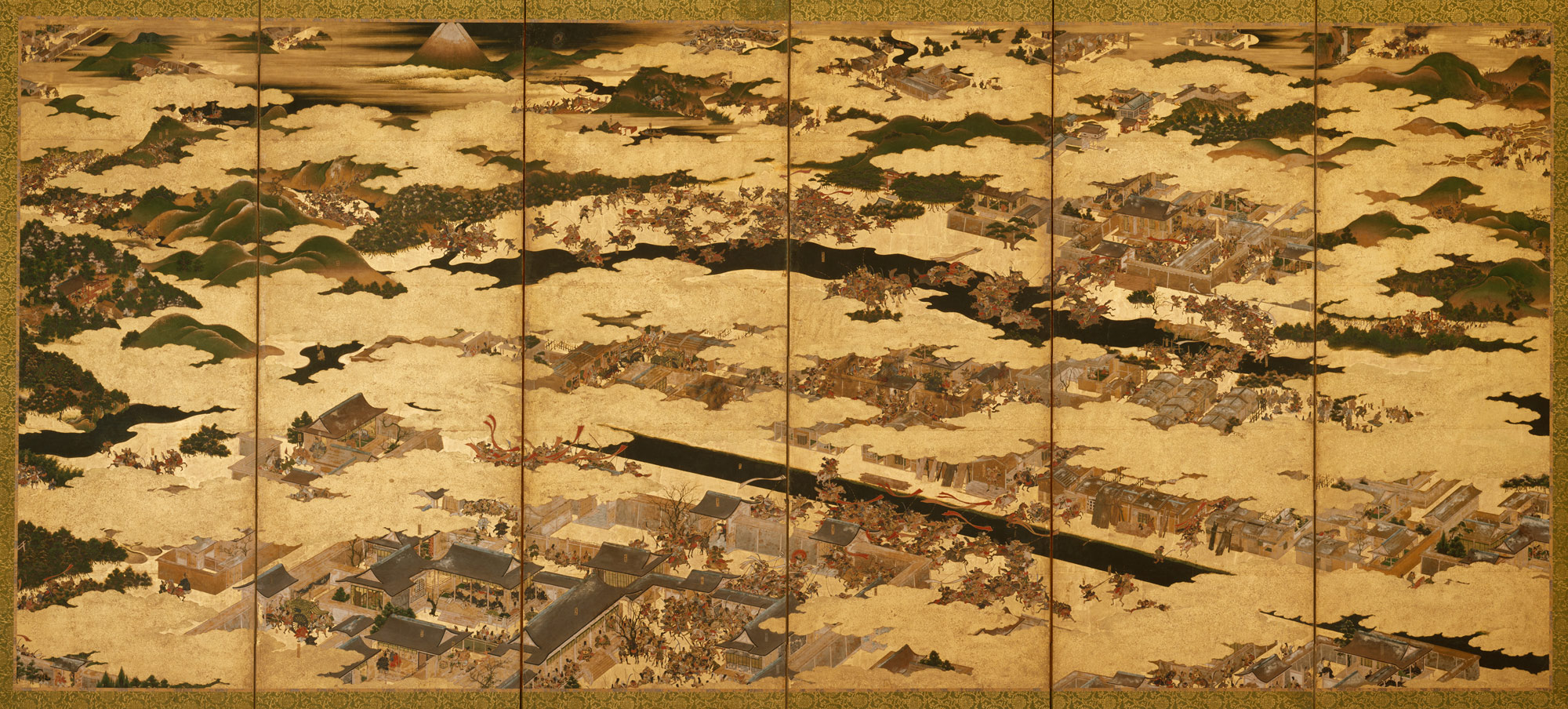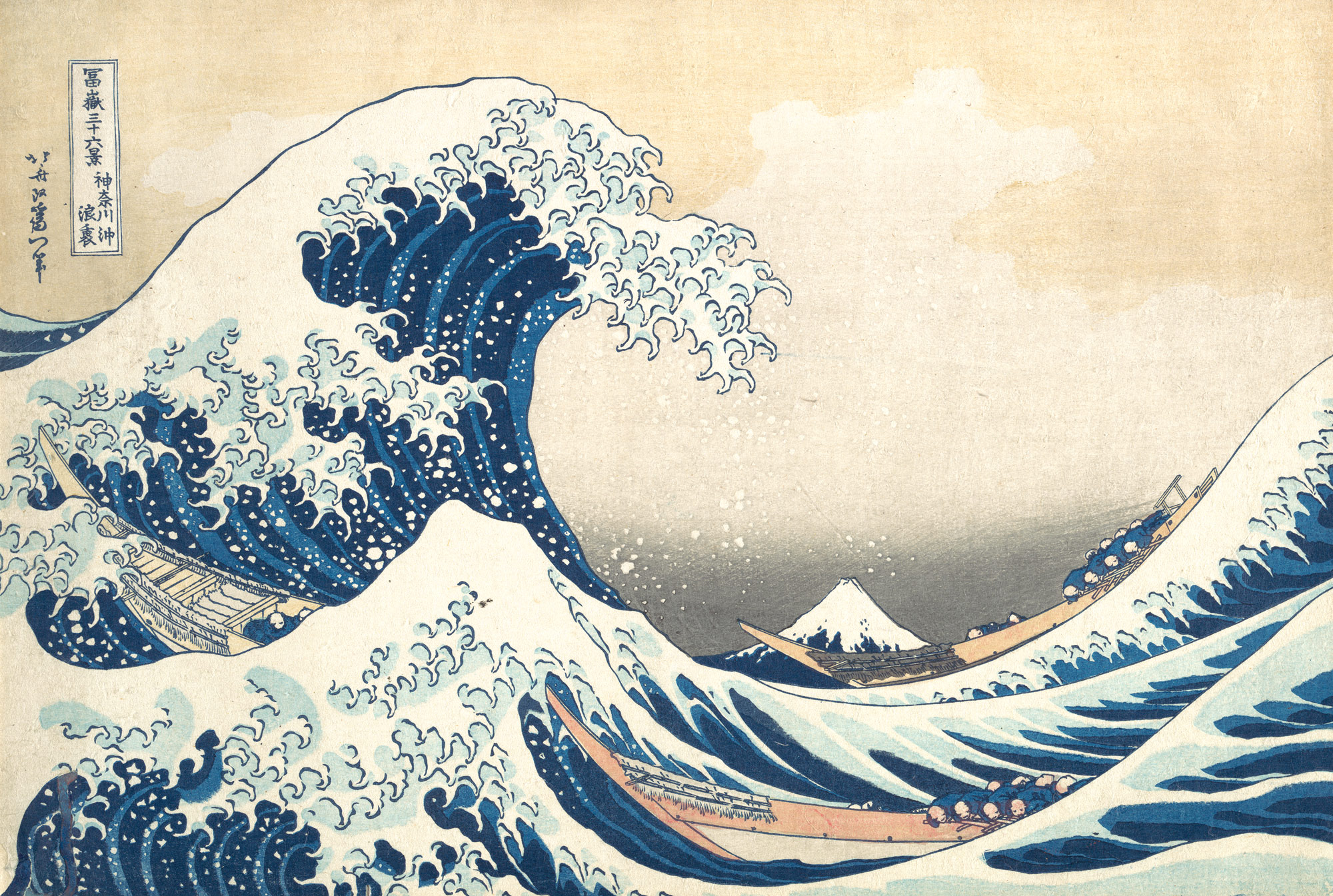The Tokugawa shogunate was the last feudal Japanese military government. It existed between the years 1603 and 1867. Since the shogunate ruled from the Edo Castle, the Tokugawa period is also known as the Edo period. A dominant characteristic of this period was the presence of repressive policies issued by the shogunate and artist's attempts to "escape" these censorships.
Painting
The Rebellions of The Hogen an Heiji Eras [31]
|
The Great Wave, Katsushika Hokusai[31]
|
The prominent school from the Tokugawa period was the Rinpa school. They offered a more bold interpretation of classical themes and an overly decorative layout.
Sotatsu, the founder of the school, used richly colored figures and motifs based on nature and contrasted them over gold-leaf backgrounds.[31]
Artists of lower class developed a separate approach to art known as fuzokuga. This style of painting depicts common, everyday scenes that emphasized the life of common people.
References:
[31] Art of the Edo period (1615–1868) | essay | Heilbrunn Timeline of art history | the metropolitan museum of art (2000) Available at: http://www.metmuseum.org/toah/hd/edop/hd_edop.htm (Accessed: 23 February 2017).


